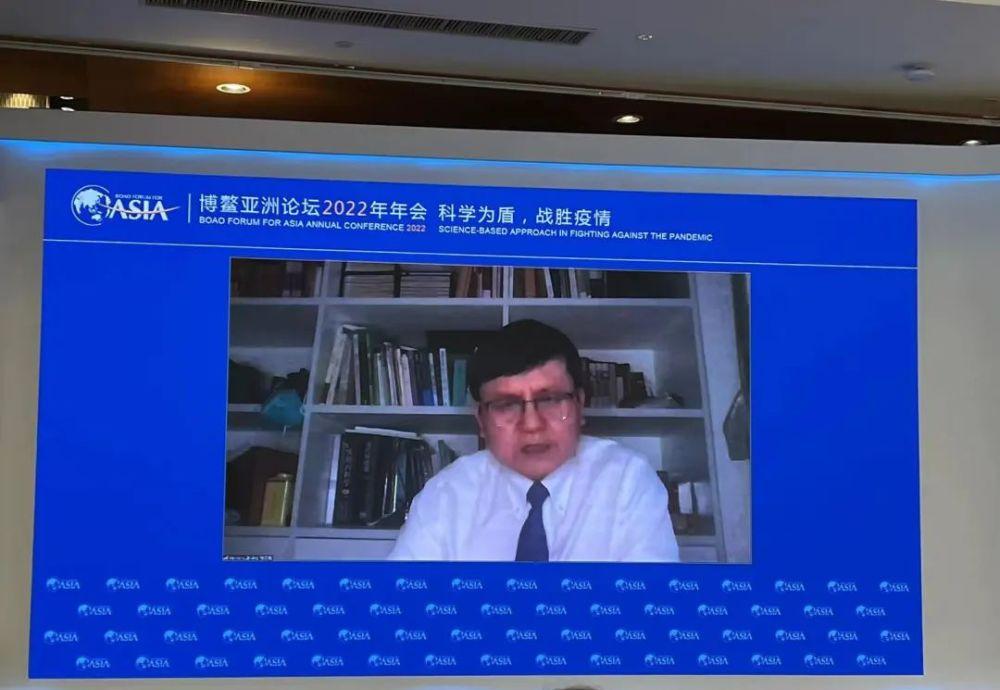At the "Science as a Shield, Defeat the Epidemic" sub-forum on the afternoon of April 21, the Boao Forum for Asia Annual Meeting 2022, Zhang Wenhong, director of the National Center for Infectious Diseases And director of the Department of Infectious Diseases of Huashan Hospital affiliated to Fudan University, said that in the face of the Epidemic in Olmi kerong, the case fatality rate of the elderly and vulnerable people with underlying diseases will always be a very important indicator of whether countries can get rid of the epidemic in the future. In the current outbreak in Shanghai, almost all severely ill patients have not been vaccinated, so vaccination rates should be further increased, especially among the elderly and people with underlying diseases.
Zhang Wenhong said that Shanghai is facing an outbreak with the largest number of cases since the outbreak in China. Recently, he and his colleagues have been working in the clinical frontline, treating patients, hoping to share the experience of frontline clinical treatment and discuss how to get out of the epidemic through the power of science and technology.
Zhang Wenhong said that a key data that has been discussed a lot in the recent epidemic is the CFR (case fatality rate), which is an important indicator for countries to evaluate whether they can get out of the epidemic. During the Omiljung epidemic, special consideration is needed.

△ Zhang Wenhong spoke at the sub-forum of "Science as a Shield to Defeat the Epidemic"
"When the Omilon spreads, the overall number of infections will be very high. The case fatality rate is multiplied by the total number of infections to give the total number of deaths. This is a very important aspect of the current assessment of the burden of the disease as a whole and the adequacy of medical resources. ”
For example, in the Asia-Pacific region, even in countries and regions with relatively similar levels of medical resources, this indicator will vary greatly, which requires a deeper understanding of how to calculate the case fatality rate during the Opmi kerong pandemic.
"We found that as the virus mutated, the pathogenicity of Omikeron did decrease significantly compared to previous waves, but it was more contagious." Zhang Wenhong pointed out that in the current epidemic situation, China, like other countries, has found that if medical resources are sufficient in the pandemic, it can cover the most vulnerable groups such as the elderly and have serious underlying diseases, and provide them with sufficient medical resources and the best treatment, which can ensure the survival of high-risk groups in the epidemic to the greatest extent.
Zhang Wenhong said that only when medical resources are very sufficient, the case fatality rate can be maintained at a very low level. In addition, it is necessary to raise the resistance of vulnerable groups themselves to a high level. In countries and regions with high vaccination levels, the case fatality rate of new crown pneumonia has dropped significantly, which is a very important, critical and scientific means to get out of the epidemic in the future, and it is also the premise for countries to achieve full exchanges in the future. There should therefore be a strong call in the Asia-Pacific region for enhanced vaccination of vulnerable populations.
He further pointed out that there may be many indicators for getting rid of the epidemic in the future, but the case fatality rate of the elderly and vulnerable people with underlying diseases will always be a very important indicator. Increasing their vaccination rates and providing adequate medical resources for those infected can truly ensure that the case fatality rate is maintained at a very low level.
△ Infographic
Speaking of the current epidemic in Shanghai, Zhang Wenhong pointed out that so far in Shanghai (as of April 21, Xiaobian Note) there are 430,000 infections and 25 deaths. Nearly 90% of the deaths are over the age of 75, almost every death has an underlying disease, and almost all severely ill patients have not been vaccinated. He believes that in this case, all people who are elderly or have underlying medical conditions should be encouraged to be vaccinated. "Because China has done a relatively good job in epidemic control in the past two years, the risk of domestic epidemic transmission is relatively low, and many people will hesitate to get a vaccine." But judging by the recent outbreak, trust in vaccines should be further enhanced. ”
Source: Oriental Network, Beijing Daily
Video: Nest Siyuan
Editor: Xiao Liu, Xiao Expert
Reviewer: Qian Chengcan